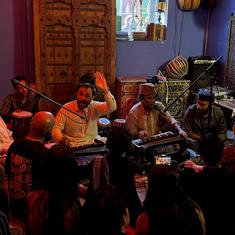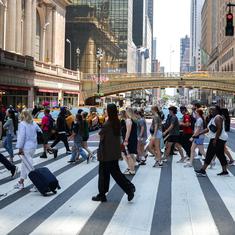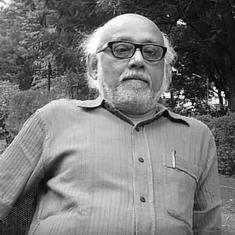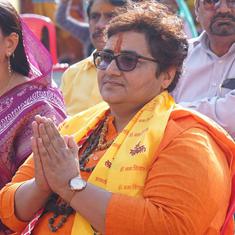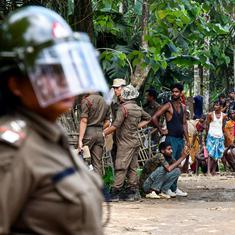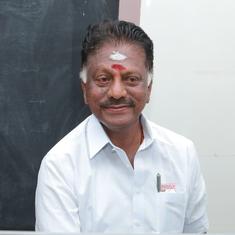Sometime in October 2016, the realm of the Big Four, as the secluded top-quartet of the men’s tennis perch had come to be known was brought crashing down.
From Roger Federer and Rafael Nadal’s injury stoppages, to Novak Djokovic’s uncharacteristic lack of form and the parallel unequivocal rise of Andy Murray, there were myriad reasons that led to this fated eventuality. It also ensured that while the uppermost echelons of tennis narrowed into themselves, they still remained an elusive bracket to get into.
Fast-forwarding into the 2017 season, the first quarter of the year gave more than a fleeting glimpse of the prospect of the regrouping of the Big Four, templated around the Australian Open successes of Federer and Nadal, and the title runs in Djokovic and Murray in Doha and Dubai respectively.
But, to presume that there truly is a resurgence of the quartet in the offing, in a throwback to the peak of their domination would be premature. This is because, for every good showing each has had, there has been an equally amplified counterpoint by way of an unconvincing performance.
Motivational shifts
Djokovic’s title defence in Doha was cut short by his meltdown at the Australian Open along with his truncated wild card showing in Acapulco at Nick Kyrgios’s intensity in the quarter-final. While he was indeed perturbed by his loss to the Australian, he has, however, digressed from his previous single-minded purposefulness towards his career.
“I’m at the stage where I’m trying to be the best possible husband, father and tennis player. It is challenging, but not impossible. Everyone is trying to be the best version of themselves. That’s the case with me as well,” Djokovic recently stated in an interview, right on the eve of the start of Indian Wells. He was, however, also quick to temper hopes being raised about him reverting to his absoluteness, as seen in the last couple of seasons. “At the same time, I cannot be at 100% every day in each role, although I [am] trying to give my best. I cannot give as much [of what] anybody else expects of me. But, I can always give as much of [what] I expect from myself.”
Given that the Serbian has been grouped in a tough quarter in Indian Wells – where he is bidding to defend his title for the fourth straight year and which could see him play Juan Martin del Potro in the third round, and have a rematch of his Mexican Open matchup against Nick Kyrgios in the fourth round, followed by a quarter-final against either Federer or Nadal, the 29-year-old’s veering towards practicality is quite understandable.
The dichotomous rise of the Federer-Nadal duopoly
The realism that irrespective of them playing each other in the final of a Major, the clout of Federer and Nadal’s game is waning is also, likewise, graspable. Of the two former spearheads, while the Swiss was inexplicable – and later revealingly voluble – in his match against Evgeny Donskoy in Dubai, the manner in which the Spaniard lost both the finals he has had contested this year – at Melbourne Park in January and in Acapulco, last week – beget the question as to whether he still was the powerhouse that he used to be, when it came to shunting aside his opponents, regardless of the penetrativeness of his opponents’ game.
Not that either player would want to dwell on their results beyond the necessary token amount of time.
Regardless of whether Federer’s loss to Donskoy giving him an unexpected setback, the 18-time Grand Slam champion hadn’t considered himself to be in the reckoning to make it to the final in the Emirates, let alone winning his eighth title there. As he does not expect to replicate his Australian Open heroics in Indian Wells or Miami. Moreover, with not much points to defend until the grass season, where he is keen to revisit his haul of trophies – especially at Wimbledon – Federer is being perceptive in wanting to take his comeback on a match-per-match basis.
It is then a similar – if not exact – motivation that is fuelling Nadal, whose immediate area of focus is on doing well on clay, most specifically at the French Open where he has gone win-less for the last two years. A consistent run-up in Indian Wells, where he reached the semi-finals last year, would be a boost to his ranking right before the clay season. But, as reiterated by him before, bulking it up during the clay season would make him impervious to the positional fluctuations in the ATP ranking system since he too doesn’t have substantial points to defend for the rest of the year.
The sustainability of Andy Murray and its derivatives
There in, the aspect of the getting together of the Big Four has also become passé, with priorities having changed and the players seeming to have conveniently moved on from the terminology. And, it’s most evident from the perspective of Murray than the remaining troika.
Restricted to the immediate short-term as the professional concerns of the former World No 1’s were, Murray, the player currently holding the rank, is focusing long-term, at least until the end of the season.
When asked about it during his week in Dubai, the Briton clarified his stance and said, “Now that I’ve got there [to the top], I would obviously like to try and finish the year at No 1 again. It’s motivating for me to see that I am behind Rafa [Nadal] and Roger [Federer], to try and catch them [in the Race to the ATP finals], rather than looking at it like, ‘I’ve got a lead, I can sit back and relax for the next few months because it’s unlikely anyone can overtake me in the next few weeks.’”
In spite of this self-awareness, Murray cannot overlook the fact that he is the sole member among the other four who is safely ensconced at the top. As he cannot understate that he is also the only player who is assured of retaining his place as the world’s best for the next two months, regardless of any (potential) shoddy performance.
As such, far from there being a rejoining on the cards, the only perceivable certainty is that men’s tennis is in flux even as there is an apparent monopoly in the functioning of the ranking system.


